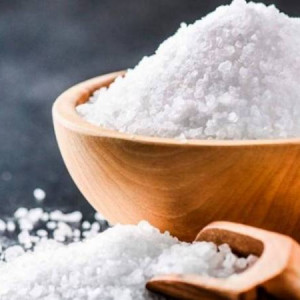Have you ever heard about this wonderful spice called star anise? But what is star anise? And why should you care about it? Star anise is a pretty little spice that packs a big flavor punch and a long cultural history of use. Star anise is one of the most famous spices in the world. Star anis also known as Chakri Phool in India is a hard and shiny spice that comes from the fruit of an evergreen tree grown in Asia. So, what else should you know about this versatile Asian spice? Let's take a closer look at star anis, where it comes from, how it's used in cooking and medicine, and how it might be used in your own kitchen. It is often used in Asian recipes and has a strong licorice flavor. It can be used whole and removed before serving or ground into powder for use in liquids like stocks, soups, sauces, and marinades. Star anise is also key to making Chinese five-spice powder, a common spice blend made from star anise, fennel seeds, Sichuan peppercorns, cloves, and cinnamon.
Star anise is a flowering plant in the magnolia family. It is native to Southeast Asia and is naturalized in parts of Australia, but it can also be found in other countries such as China, New Zealand, and South Africa. The fruit of this tree is used to make star anise oil, which has been used for centuries to treat digestive issues like flatulence and bloating.
Star anise is a small tree that can grow up to thirty feet tall and has leathery green leaves with white flowers followed by seed pods containing from eight to 20 seeds each (which are also called "stars"). Its leaves are ovate with serrated edges, and its flowers are greenish leaves with five petals that bloom during spring or early summer months when days are warmest and nights start cooling off slightly; this means star anise will grow best in warmer climates like India, and Vietnam, China, and Australia where there's plenty of sunshine throughout springtime. However, Star anise can be grown in many different seasons, but it's to plant seeds in the springtime!
The plants need about six months to fruit, at which point their green pods contain eight distinct prongs of seed (which are the spice). Cultivated star anise is more prevalent in cooking than wild star anise, which has darker leaves and a more bitter taste. Cultivated star anise is not as bitter as wild star anise, and it's sweeter.
The bulbs of these plants contain several different volatile oils including estragole (a precursor to estradiol), camphor, and linalool. These essential oils are extracted using steam distillation or solvent extraction processes and then blended with other essential oils such as cinnamon or clove oil, before being sold commercially in health food stores or pharmacies.
Star anise oil has a sweet licorice flavor similar in appearance and aroma; However, it's not exactly the same thing as regular ground star anise spice because only its seeds are used while whole spices include both seeds plus husks as well as other parts of this plant besides just its roots/stems/flowers etcetera).
Star anise is a spice used in many different cuisines. It is most often associated with Chinese and Vietnamese cooking, but it can also be found in Korean, Taiwanese, Indian, and Thai dishes as well. The star-shaped fruit is harvested before ripening to use as whole pods or ground up into powder and infused into foods to lend its licoricey flavor.
This culinary herb has also been incorporated into ayurvedic medicine for centuries because of its ability to enhance digestion and relieve gas pain caused by indigestion or bloating. The herb is used in Ayurveda to aid digestion by stimulating the flow of bile. Star anise is not only known as a digestive aid, but it is also used to treat respiratory problems, nausea, fever, colds, and asthma. The seeds are believed to have anti-inflammatory properties and may be effective against some cancers
Conclusion
Star anis is a pretty little spice that packs a big flavor punch and a long cultural history of use. It has also got some interesting features in terms of its origin and cultivation, but perhaps just as importantly: it smells like licorice! This odoriferous spice can be used to bring out the flavors of other spices or ingredients, while simultaneously enhancing the aroma of any food or drink it touches. If you are not already familiar with this plant and how people use it in cooking, medicine, or even just as an air freshener (in some parts of Asia), what are you waiting for?















Follow Chef Sunil